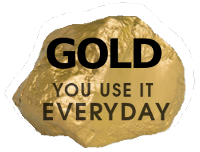- Why Mining Matters
- Jobs
- Safety
- Environment & Operations
- FAQ
- Links
- Fun Stuff
You are here

Gallihar and Dimock
Mr. Death
The Guilty Grenos
James Mitchell
Hugh McAskill
Gold Grows Under Shrubs?
Unexploded Dynamite
Tangier’s John Murphy
Joe Howe Dimock
Chats with Pioneer Miners
Charles Annand
John Scott Williams
Nicholas Fitzgerald
Chief Lonecloud
Pistols and Gold Mines
James MacDonald’s Thefts
John Vaughn
Herbert Dixon and the Halifax Explosion
James Bishop
Neily's Scandals
Waverley in 1934
Discovery of Gold at Dufferin
Hurricane Island
Fletcher and Faribault
Jack Munroe
Mine Apprentice Project
Small Gold Districts
15 Mile Stream
Tributers
E. Percy Brown and the Brookfield Mine
Barachois
Nova Rich Mines
Shad Bay Treasure Hunt
Montague 1937 Accident
Father Lanigan’s “Prospect”
George V. Douglas
The Stewart Brothers
Goldboro
Moose River's Touquoy Mine
Camerons Mountain
Jim Campbells Barren
Stanburne's Puzzling Gold Mine
Pockwock
Beaverbank Lake
Banook Mining Company
Deep Gold Mining
Wellington
Arsenic and Gold
Dynamite
War of Words
King of the Klondike
Oliver Millett
Kempt Gold Mining Company
Carleton
The Memramcook Fiasco
Love and Gold in Oldham
Montague 1893 Disaster
Central Rawdon Consolidated Mines
Cochrane Hill
Amateurish Early Gold Mining
Sable Island Gold
The Sea Wolf
Trueman Hirschfield
Alexander Heatherington
Prospector Joe Cope
Killag Quicksand
George W. Stuart
Wellington
Billy Bell
Cooper Jim Mine
South Branch Stewiacke
Walter Prest
Lake Charlotte
Acadia Powder Mills Company
The Ovens Anticline
Moose River Anticline
Avon Mine Explosion
Montague
Waverley Claims Dispute
Avon River
Moose River Disaster
Mooseland Scam
New York and Nova Scotia Gold Mining Company
Rosario Siroy and the South Uniacke Gold District
Blockhouse
Killag Gold District
Miller Lake
Baron Franz von Ellershausen
Mooseland: Nova Scotia’s first Gold Discovery
United Goldfields of Nova Scotia
Pleasant River Barrens Gold District
Lochaber Gold Mining Company
Rawdon Gold Mines
MacLean Brook
Gold in Clayton Park?!
Forest Hill
Meguma vs. Placer Gold
Uniacke
Voglers Cove
Gold River
Moosehead
Goldenville
Westfield
Indian Path
Harrigan Cove
Centre Rawdon
Nova Scotia’s Gold Mining History
WWII Gold
Middle River Gold District
Early Gold Discoveries
Halifax 1867
Paris Exhibition 1867
Mining and Tourism
An Act relating to the Gold Fields
Molega Gold District
Brookfield Gold District
Gays River
Halifax Gold
Caribou Gold District
Renfrew Gold District
Oldham Gold District
Whiteburn Gold District
Country Harbour Mines
Waverley Gold District
Robert Henderson and Klondike Gold
George Mercer Dawson
Cow Bay Gold District
Lake Catcha Gold District
Wine Harbour Gold District
The Guilty Grenos
In 1893, gold miners Alexander and John Greno were charged with stealing from a gold mine in Oldham, Halifax County. They were caught because the way gold was processed in that era left a literal trail that led the authorities to them.
The Greno brothers were accused of stealing gold and plates (parts of a stamp mill) from the Hardman and Taylor mine.
Stamp mills were large machines that crushed gold-bearing rock, the first step in the process of separating gold from the quartz in which it is usually found. Mills commonly had banks of five stamps with the largest operations having ten banks or fifty stamps. The crashing of the stamps dropping on the ore could be heard for miles around.
In a stamp mill, quartz was washed with water and moved under the stamps that went up and down, crushing the quartz into sand. Each stamp would weigh about 800 to 1,000 pounds.
In the 1800s, mercury was then used to separate the gold from the sand, but mercury hasn’t been used in Nova Scotia since the early 1900s because it is bad for the environment.
There are two main reasons mercury was used back then – it worked and people didn’t understand the harm it did to the environment.
Gold dissolves in mercury but mercury does not absorb other impurities, so it was effective at separating the gold. The mercury/gold mixture was recollected and heated until the mercury boiled away. A simple still like those used to make alcohol would draw away the vaporized mercury, collecting it for reuse, leaving mostly pure gold. The gold was then refined for greater purity and formed into bricks or nuggets.
The Grenos were caught because the gold/sand mixture was in buckets – the quartz had been crushed but the gold had not yet been separated with mercury. The two men carried off the buckets but, as the Halifax Herald described it, “The buckets of sand being heavy the thieves were obliged to put them on the ground at times to rest. In this way the robbers were tracked as some of the sand was left on the ground.”
An August 5 article offered more details about how the arrest unfolded: “The plates were found some distance from the mill, hidden in the bushes. They were left undisturbed and watchers were set for the robbers. After watching all the week the men were rewarded early Thursday morning by seeing two colored men, John and Alex. Greno, go to where the plates and gold were hid, and remove the leaves. The men were arrested and jailed at Oldham last night and brought to the city this morning. All the gold and plates were recovered with the exception of about $150 worth.”
(The August 7 edition of the newspaper corrected this description of the Grenos, saying, “The accused are not colored as stated.”)
The total value stolen was estimated to be about $700. The Grenos’ bail was set at $800.
The trial began on August 14 with a witness “who was a confederate of the other two,” according to the Herald. “From his testimony he seems to have been the arch conspirator. On the stand today the witness recounted the visit to the mill, described how the Grenos got in a window and said they concealed the plates and other plunder in the woods.”
The witness, not named in the article, had agreed to provide “queen’s evidence,” apparently to avoid being charged himself since media coverage did not mention a third person being charged.
The Greno brothers both testified and swore they were innocent. Robert Malcolm and Evan Thompson testified that the Grenos had “excellent characters.”
However, the weight of the evidence - and the buckets - was too great. The Grenos were found guilty.
While not much is known about them, historical Department of Mines records tell us that the Grenos (spelled “Greenough”) again mined gold in Oldham from 1910-14. They produced 852 ounces of gold in those years, which would be worth several million dollars today.
Misconceptions about modern gold mining stem from historical mining practices, like the use of mercury, that we agree were not good enough. However, historical sites like these have nothing to do with modern mining, which is a sophisticated, science-based activity that takes excellent care of the environment. You can learn more about the differences between modern and historical gold mining at https://notyourgrandfathersmining.ca/modern-gold-mining

















































































